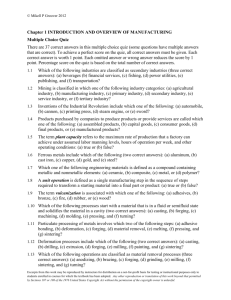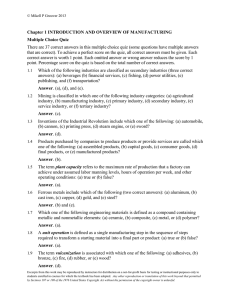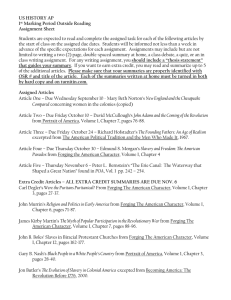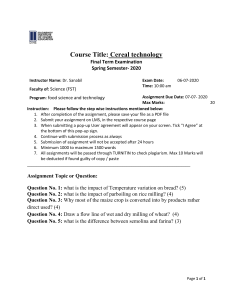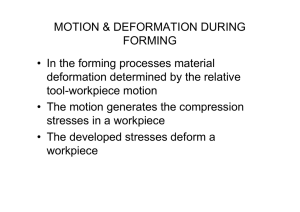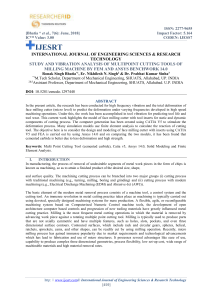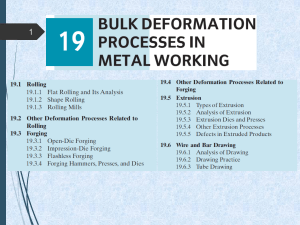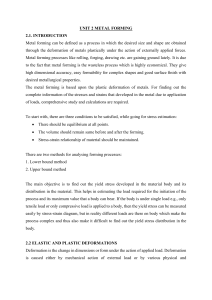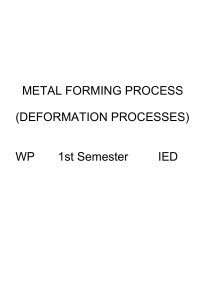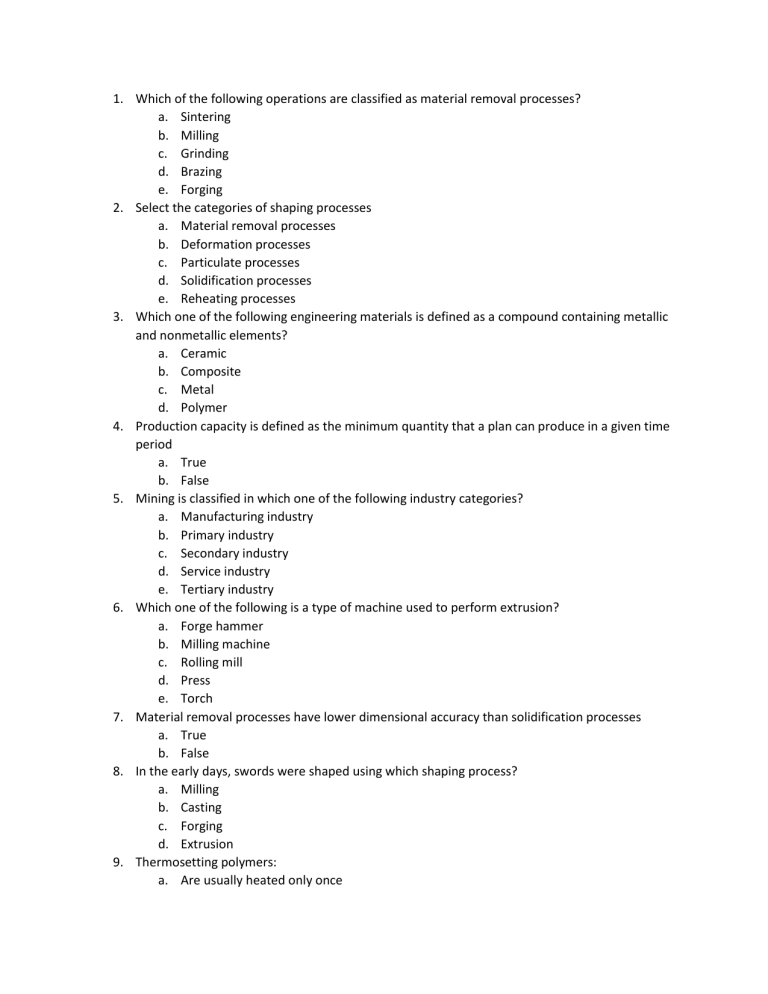
1. Which of the following operations are classified as material removal processes? a. Sintering b. Milling c. Grinding d. Brazing e. Forging 2. Select the categories of shaping processes a. Material removal processes b. Deformation processes c. Particulate processes d. Solidification processes e. Reheating processes 3. Which one of the following engineering materials is defined as a compound containing metallic and nonmetallic elements? a. Ceramic b. Composite c. Metal d. Polymer 4. Production capacity is defined as the minimum quantity that a plan can produce in a given time period a. True b. False 5. Mining is classified in which one of the following industry categories? a. Manufacturing industry b. Primary industry c. Secondary industry d. Service industry e. Tertiary industry 6. Which one of the following is a type of machine used to perform extrusion? a. Forge hammer b. Milling machine c. Rolling mill d. Press e. Torch 7. Material removal processes have lower dimensional accuracy than solidification processes a. True b. False 8. In the early days, swords were shaped using which shaping process? a. Milling b. Casting c. Forging d. Extrusion 9. Thermosetting polymers: a. Are usually heated only once b. Can be subjected to multiple heating and cooling cycles without altering molecular structure c. Show significant elastic behavior d. Have better properties than other polymers e. Have properties similar to metals 10. Which of the following industries are classified as secondary industries? a. Beverages b. Financial services c. Fishing d. Mining e. Power utilities f. Publishing g. Transportation 11. Which of the following processes start with a material that is in a fluid or semifluid state and solidifies the material in a cavity (two best answers)? a. Casting b. Forging c. Machining d. Molding e. Pressing f. Turning 12. Deformation processes include which of the following: a. Casting b. Drilling c. Extrusion d. Forging e. Milling f. Painting g. Sintering
